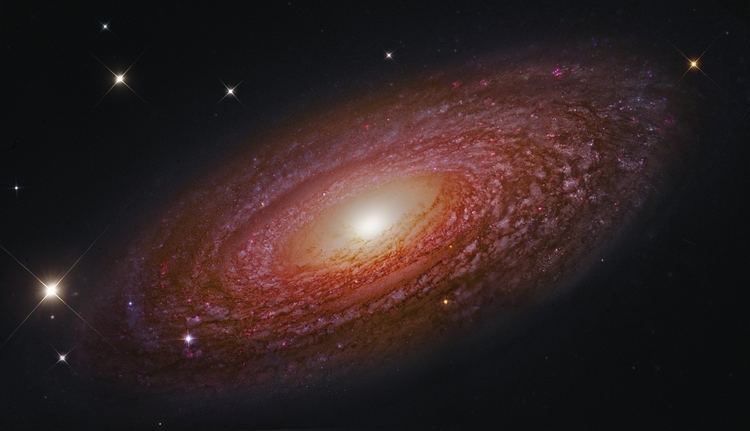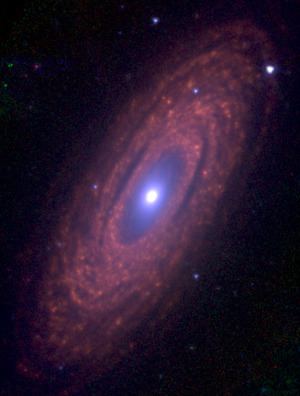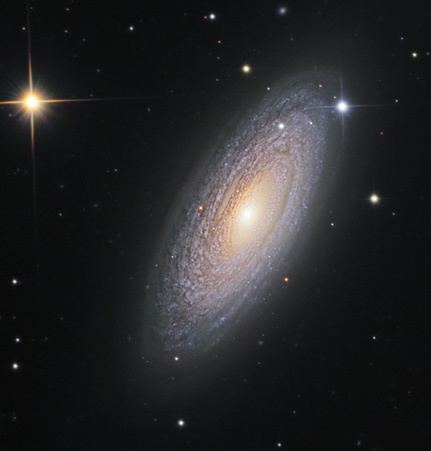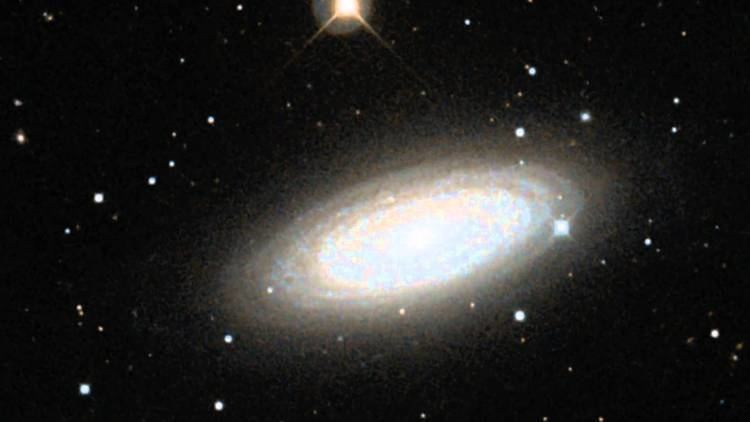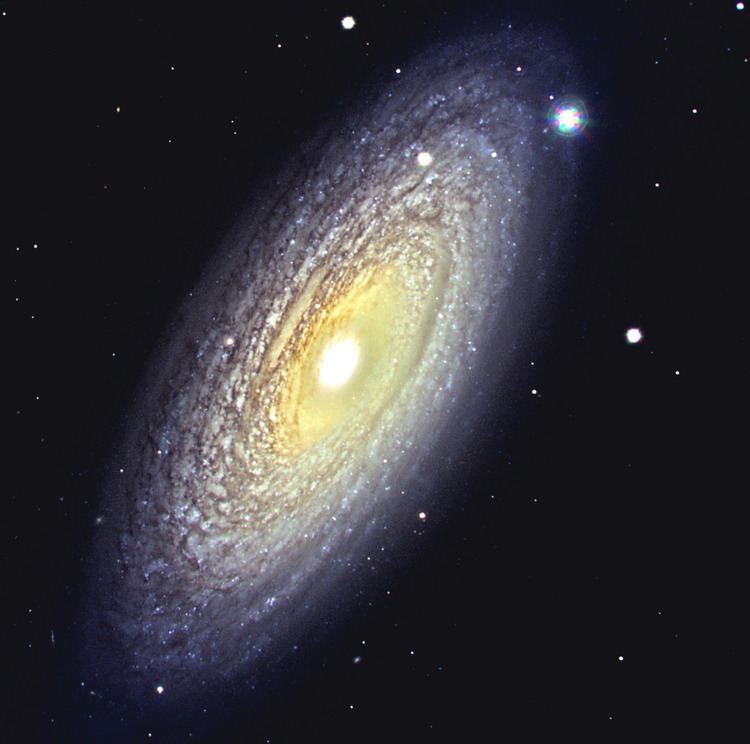Right ascension 9 22 02.6 Redshift 638 ± 3 km/s Apparent size (V) 8′.1 × 3′.5 Magnitude 10.1 Apparent magnitude (V) 10.1 | Declination +50° 58′ 35″ Type SA(r)b Apparent mass ~500 billion M☉ | |
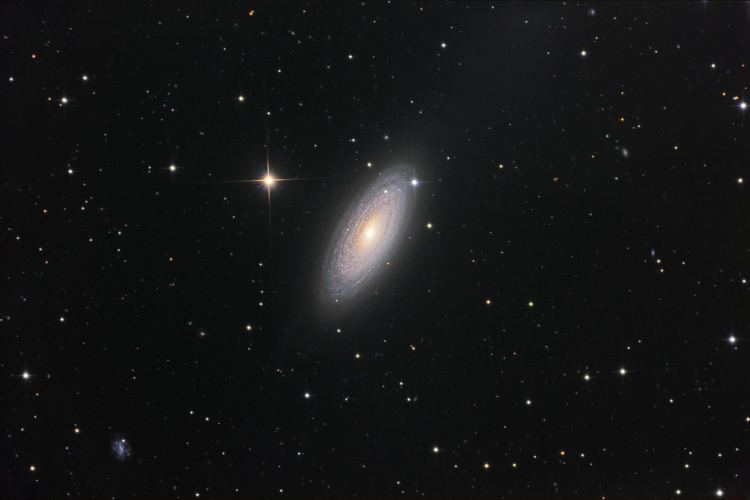 | ||
Similar William Herschel discoveries, Other celestial objects | ||
Hubble zoom into galaxy ngc 2841 1080p
NGC 2841 is an inclined unbarred spiral galaxy exhibiting a prominent inner ring structure in the constellation Ursa Major, it was discovered on 9 March 1788 by William Herschel. Initially thought to be about 30 million light years distant, a 2001 Hubble Space Telescope survey of the galaxy's Cepheid variables determined that it was approximately 14.1 megaparsecs or 46 million light years distant.
Contents
- Hubble zoom into galaxy ngc 2841 1080p
- Hubble shows new image of spiral galaxy ngc 2841
- Structure
- LINER emission
- References
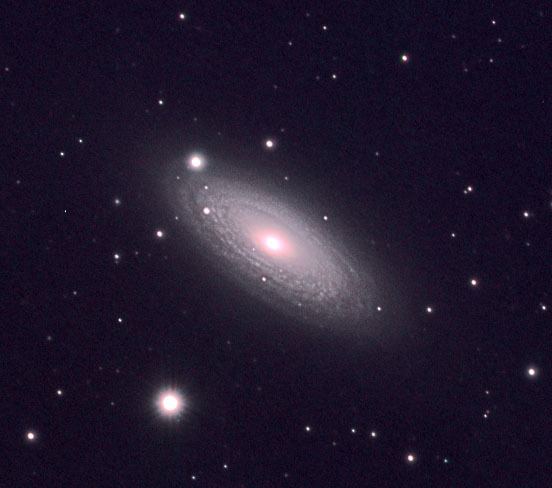
Hubble shows new image of spiral galaxy ngc 2841
Structure
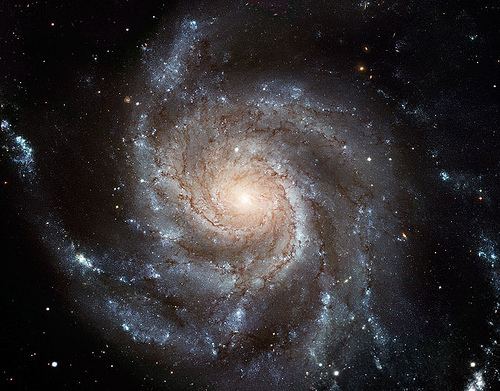
NGC 2841 is a giant spiral galaxy with properties similar to those of the Andromeda Galaxy. It is a prototypical flocculent spiral galaxy, a type of spiral galaxy whose arms are patchy and discontinuous.
NGC 2841 is home to large population of young blue stars, and few H II regions.
LINER emission
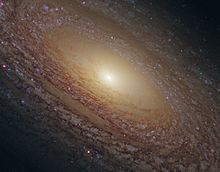
NGC 2841 contains a low-ionization nuclear emission-line region (LINER), a type of region that is characterized by spectral line emission from weakly ionized atoms.
